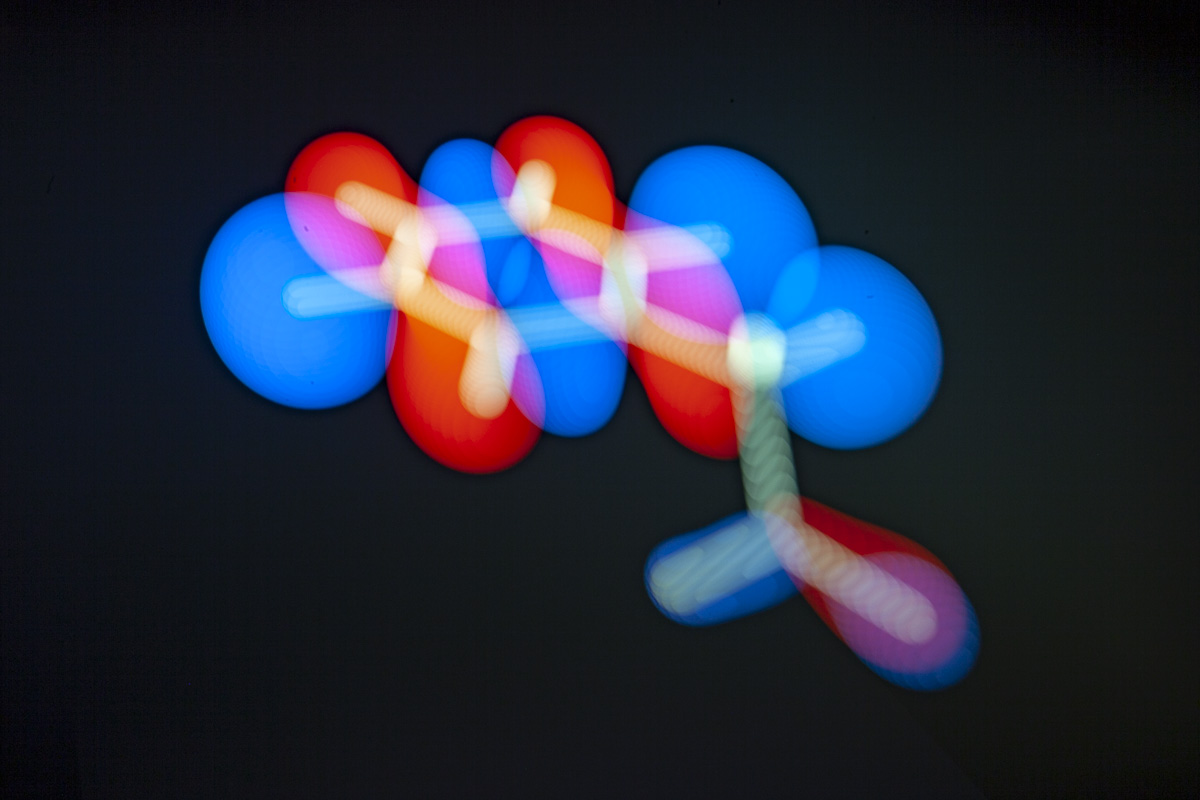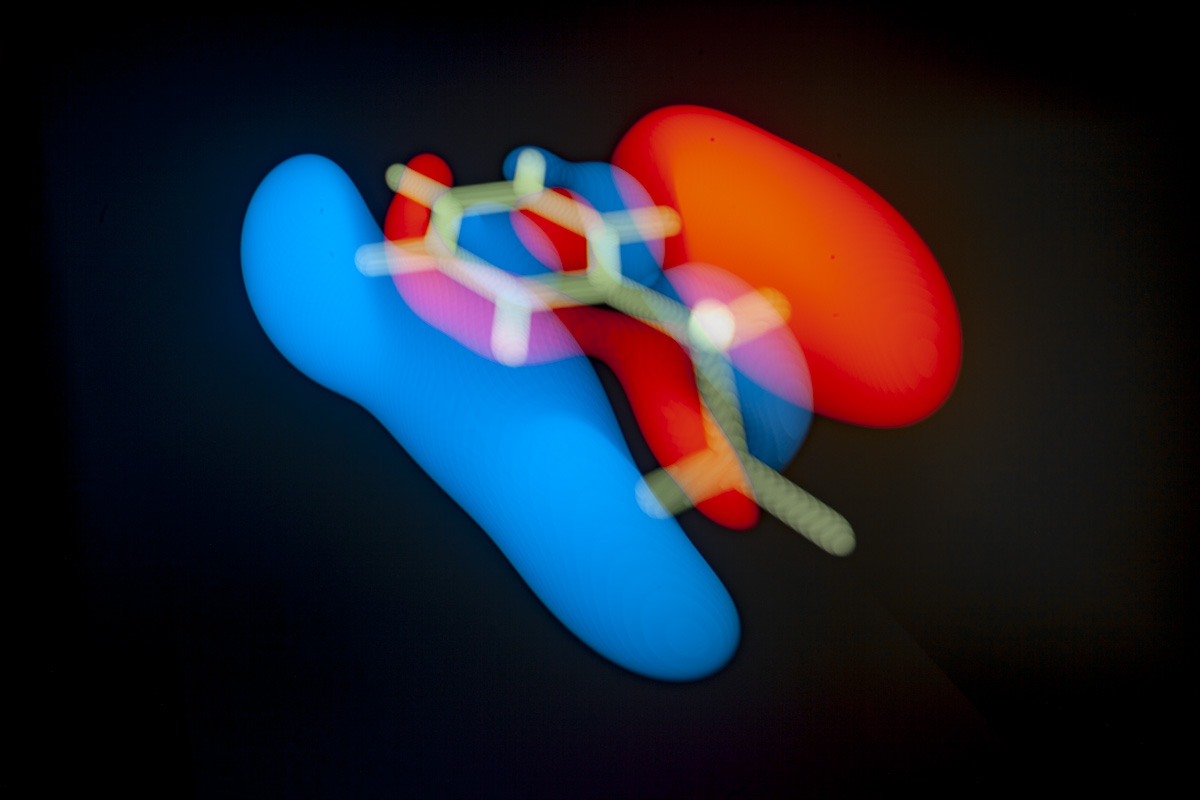The Aromatics
Digital print series (12 images)
12" x 18"
2019
Aromatic compounds are a group of molecules that are all organized around a ring of carbon atoms. They also have distinctive odors, and were named long before scientists understood their molecular structure.
The following photographs each capture a sequence of images derived from digital models of aromatic compounds. These pictures are displayed on a computer monitor as it travels down a motorized track, effectively 3D printing in light; a quasi-scientific exploration that recalls the efforts of the Natural Philosophers, whose efforts were not yet siloed by the established fields of study we know today.
This transitional period between amateur observation and professional articulation is full of evocative stories and abstract leaps. For example: how did we come to know what a molecule actually looks like? One could begin with story of Rene-Just Haüy, who mishandled and broke a friend’s crystal specimen in 1781. As he picked up the pieces, he took note of how the fractures propagated along a plane, and intuited that this must be due to an invisible repeating structure.
In 1858, August Kekule claimed to arrive at the ring-like formation of benzene during a dream about a snake biting its own tail. Even modern tools like X-ray diffraction require the viewer to employ a strong dose of interpretation, as the process cannot capture direct images of atoms. A father and son team solved this problem in 1913 with Bragg’s law, when the younger Bragg was only 22.
Imagine working at the bleeding edge of an idea about an invisible universe, and having to design and build completely novel tools, to see something at once omnipresent and unknown. Here artists and scientists are united, as they search for new ways to understand the complexity of a shared reality. The visual arts take this a step further by attempting to capture human subjectivities as well, though is this any different from Natural Philosophy? Perhaps the arts stand on a precipice, just as protoscience did, before technology allows us to attain definitive answers to abstract questions that once seemed impossible to resolve.

